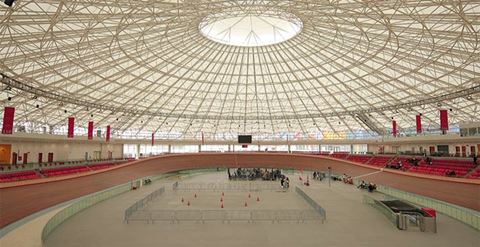Arenas, stadiums and concert halls are starting to resume normal operations in many places in the world. However, delivering an enhanced visitor experience while ensuring safety and security is a challenging aim.
“They will need a comprehensive security strategy to effectively manage the flow of people in and around the premises”, says Joakim Lagerholm, Regional Sales Manager for Genetec.
Most large venues have already deployed digital camera systems, access control systems, license plate readers, and other technologies to monitor guest safety and secure sensitive areas. Those that have integrated all these systems into a unified dashboard are discovering these tools are handy for more than just security.
Use of data
Joakim Lagerholm says that the stadium industry is exploring different ways of combining information from various systems to benefit the customers. Instead of checking physical tickets, many arenas are moving towards contactless electronic “boarding pass-es”. Integrating ticket information with access to specific areas such as VIP boxes is an example – so that customers can access appropriate zones based on the type of ticket package they purchased.
“When you have an arena that holds 50,000 people, managing flows requires how people walk more than just pasting a few arrows on the floor. Arena managers must look after the entire customer experience, from parking the car, finding their place, to toilet breaks and kiosk visits, and developing new routines to streamline getting from A to B while limiting queues and crowds,” says Joakim Lagerholm.
Minimize queue times
The needs of the visitors may dif-fer depending on the type of event being organised. Audiences at, for example, football and hockey matches want to be able to buy drinks and snacks at half-time and period breaks. If it is a concert or something else in the same arena, the needs may differ.
“Arenas are looking at how they can combine data from a variety of systems to improve and adapt their customers’ experience. For example, instead of having people queuing for 20 to 30 minutes waiting to scan tickets and go through security checks, others use people-counters in their video surveillance systems to mini-mize waiting times,” says Joakim Lagerholm, who emphasises that the software can be configured to notify staff if the acceptable number of people is exceeded.
“Then the staff can open another gate or redirect the audience.”
Improves security
Video analysis can also identify in which direction people are moving. It can be useful to warn personnel if, for example, people are moving towards restricted or closed areas, so that security personnel can intervene. The cameras can also be programmed to trigger a security alert if a person enters a specific zone.
“With a robust access control system, electronic tickets and staff access cards can be scanned as they enter or leave specific zones. This is another way of dealing with crowds and improving security by restricting access to certain areas. In the event of a security incident, this data can also be used to identify who was present at a certain place and time,” says Joakim Lagerholm.
Unified security platform
Video surveillance analytics, license plate reading, access control, intercom systems, heat mapping, and other tools are essential tools to gather data on guest behaviour and ensure sensitive areas are secured. What brings it all together is a unified physical security platform.
“With a unified system, venues can more easily sort through all that data to find actionable in-sights. Look for a unified software solution that allows your team to create multiple dashboards that update in real time, so they can get a clear view of what is happening right now, not just what’s in the rear-view mirror. Realtime map-ping is another handy feature to make it easy to get a bird’s eye view of events and visitor behaviour in and around a connected venue,” states Joakim Lagerholm.
“With this approach, security teams can be deployed more efficiently as well. The person in the control room becomes like the maestro of an orchestra. Each team member on the ground can have their part to play, with their own dashboard on a smartphone or tablet to empower them to monitor and respond within their zone”.
More innovation to look forward to
Some arenas also use smartphone apps to help visitors / audiences find more efficient routes through the venue. They can suggest parking spaces that are closer to the zone where they are located, to avoid spending time looking for their place. In some cases, the apps also allow audiences to order food from their place to reduce congestion around kiosks and restaurants.
Joakim Lagerholm believes that there will be more innovation as the systems become more and more integrated.
“Visitors and audiences are not the only ones who benefit from this type of proactive, smart technology-based methods for arena safety. Employees, contrac-tors and suppliers and even the surrounding community can feel safer when they know the arenas are doing everything they can to keep the building and parking spaces safe. For example, arenas can establish emergency call stations around the perimeter so that visitors can easily report problems or call for help if they feel unsafe”, he concludes.
Source: SECURITYWORLDMARKET


